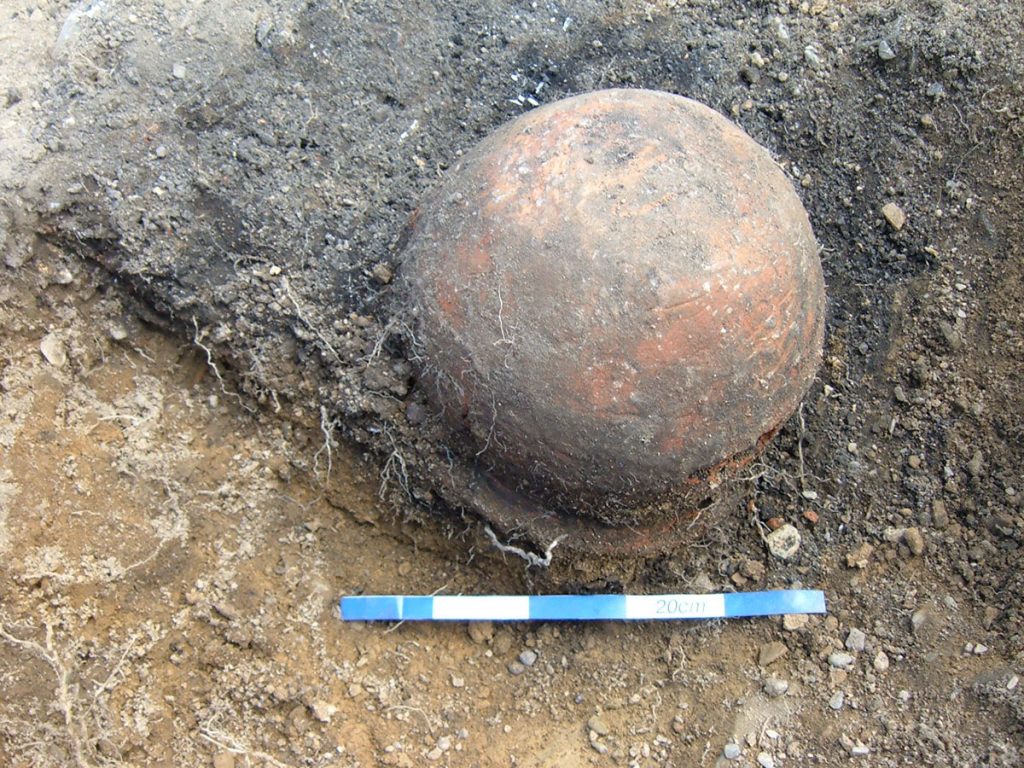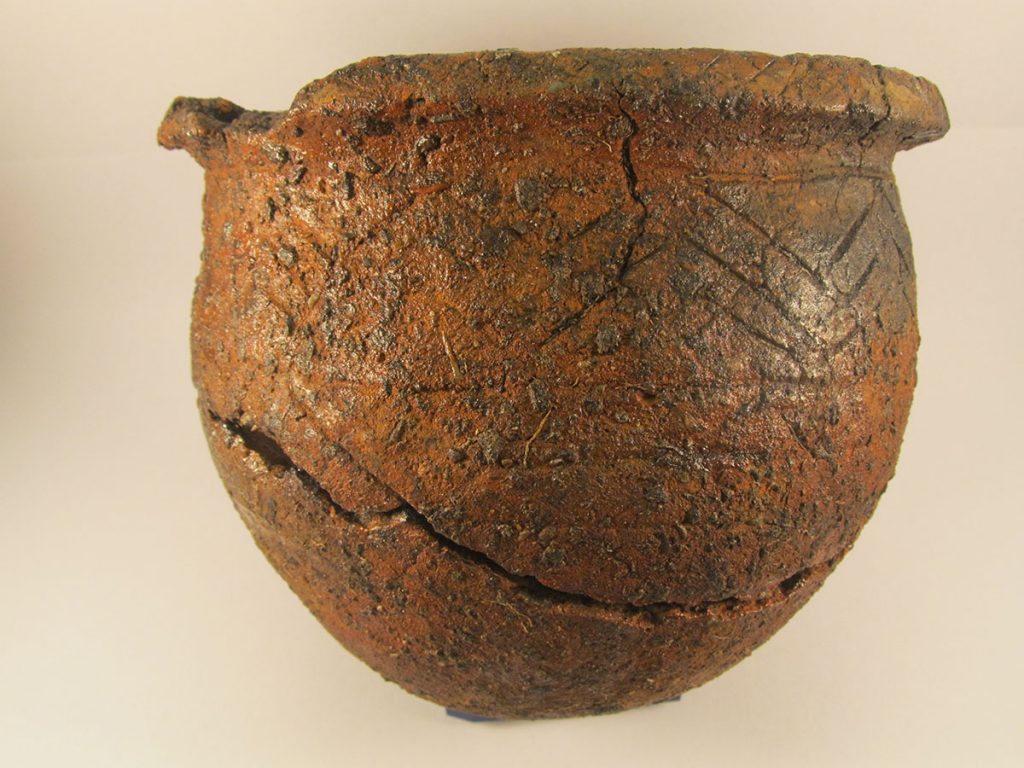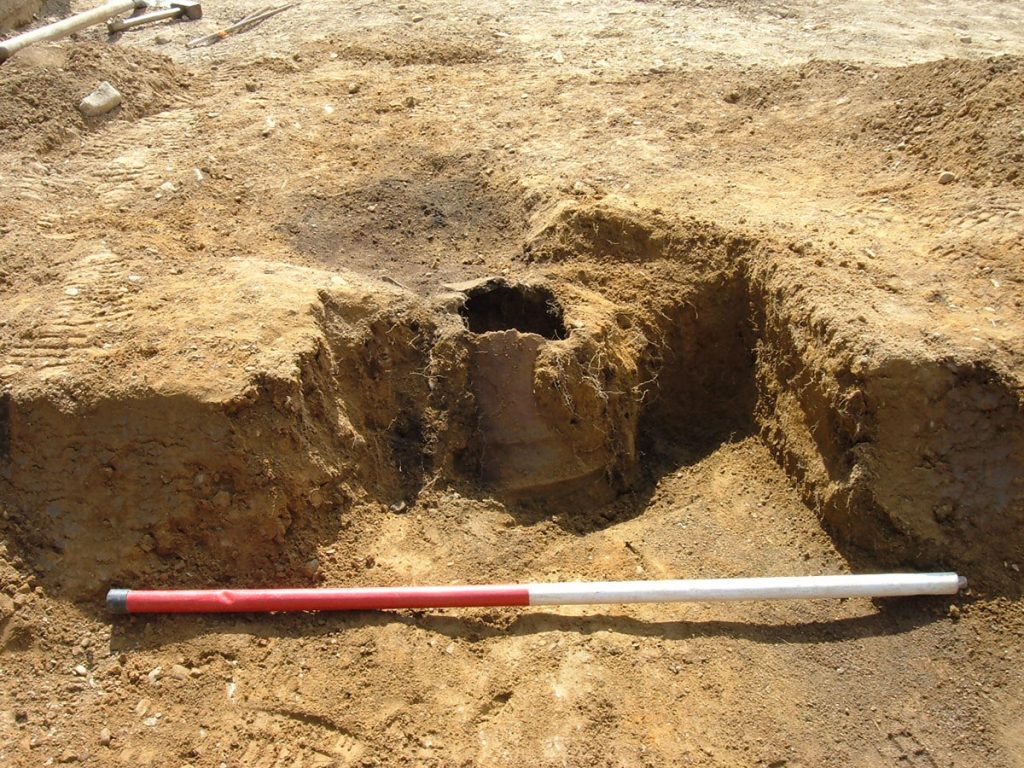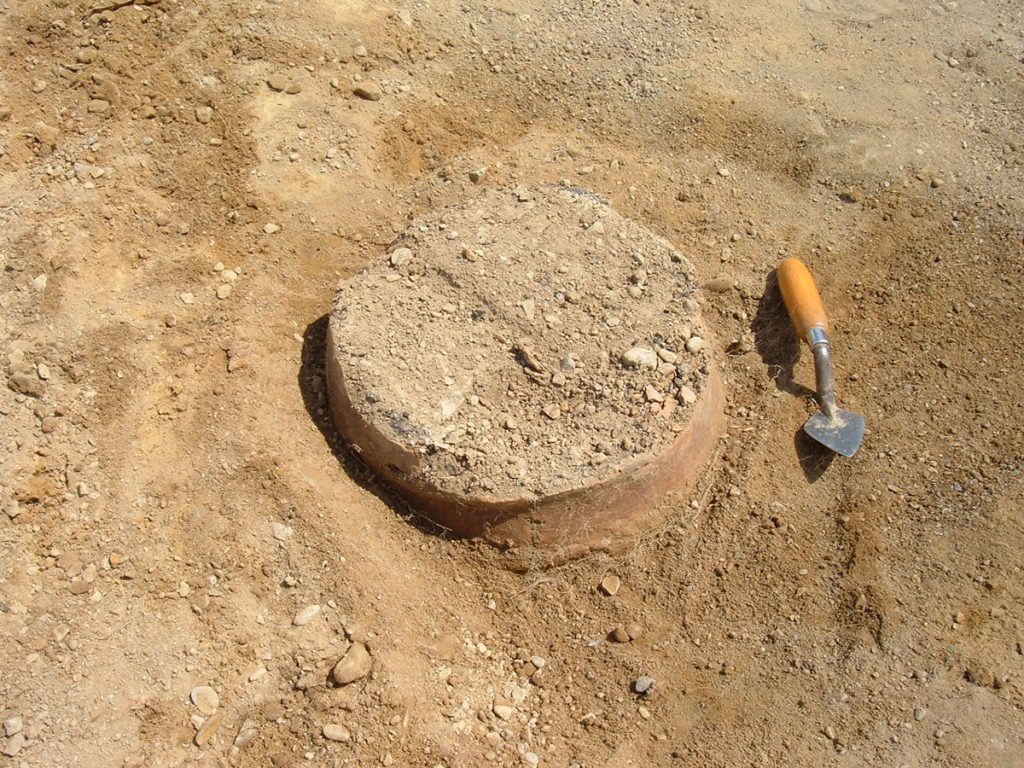A proposed sporting facility development at Collon, Co. Louth was revealed to be an early Bronze Age cremation cemetery.
Similar burials were found ~300 m to the SW in the 1950’s. Six cremation burials were recorded. At least two adults and one juvenile were included in the bone assemblage from the site. The human remains did not represent full individuals, but were rather partial or token deposits. Three were accompanied by funerary vessels inverted over cremated bone. A fourth had only the base of an upright cinerary urn remaining. All vessels had sustained substantial post-depositional damage from later ploughing.
Two vessels survived relatively intact, a bipartite vase and a cordoned urn. Alder charcoal retrieved from beneath the bipartite inverted vase was radiocarbon dated to 1900–1730 BC. Considering the typology of the accompanying pottery vessels, a short period of burial activity around 1750 BC was most likely.

 Mid-excavation view of bipartite vessel.
Mid-excavation view of bipartite vessel. Bipartite vessel following conservation.
Bipartite vessel following conservation. Cordoned urn during excavation.
Cordoned urn during excavation. Mid-excavation view of a second cordoned urn.
Mid-excavation view of a second cordoned urn.